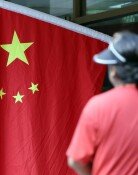Public Utility Rates To Go Up In July
Public Utility Rates To Go Up In July
Posted June. 23, 2004 21:13,
Consumer prices might go up unchecked due to the overall increase of public utility rates.
On top of the recent oil price hikes, public utility rates, such as bus and subway fares, and water service, are likely to increase. The prices of diesel oil and liquefied petroleum gas (LPG) are also going to go up starting next month, placing a heavy burden on consumers.
The Ministry of Finance and Economy (MOFE) and local governments decided to raise the utility rates in the latter part of this year on Wednesday.
The fares of express and cross-country buses will go up 9 percent and 12 percent respectively starting in July. The one-way express bus fare from Seoul to Busan will cost 20,000 won, up from 18,400 won, and that of Seoul to Gwangju will be 13,900 won, up from 13,000 won.
The bus and subway fares in Seoul will be raised by 14 percent and 25 percent respectively starting in July. Negotiations are underway to raise the bus fare by 14 percent in Daejeon.
Airfares are also expected to increase due to the high international oil prices.
Local governments are considering the rise of public utility rates. In terms of water service, 6.5 to 30 percent hikes are expected depending on regions. Bucheon in Gyeonggi-do and several other areas in Jeollanam-do are planning to increase the prices of designated plastic bags.
The consumer price of diesel oil will go up from 878 to 936 won per liter in July due to the traffic tax increase, and that of LPG for vehicles will increase from 604 to 676 won per liter.
The postage rates for packages, which have never been raised since September 1997, will go up 14.5 percent in July. The Ministries of Health and Welfare, and Finance and Economy agreed to increase the price of cigarettes by 500 won per pack in the second half of this year.
The government has been put off the increase of the utility rates in the first half of this year.
The Consumer Price Index for May calculated by the Korea National Statistical Office showed that public utility rates in April rose only one percent year-on-year, which was far lower than the 3.3 percent increase of the overall consumer price. The government and local governments usually raise the utility rates in the second part of the year because consumer prices tend to go up in the first half due to seasonal factors.
It is uncertain, however, whether the government can keep its inflation target of three percent when public utility rates are raised.
The prices of diesel oil and LPG will be raised every July 1 until 2006 according to the revised traffic law in 2002, which was intended to narrow the price gap with gasoline.
Jong sik Kong kong@donga.com



![[단독]통일교 ‘한학자 보고문건’에 ‘전재수’ 최소 7번 등장](https://dimg.donga.com/c/138/175/90/1/wps/NEWS/IMAGE/2025/12/22/133015670.1.jpg)



